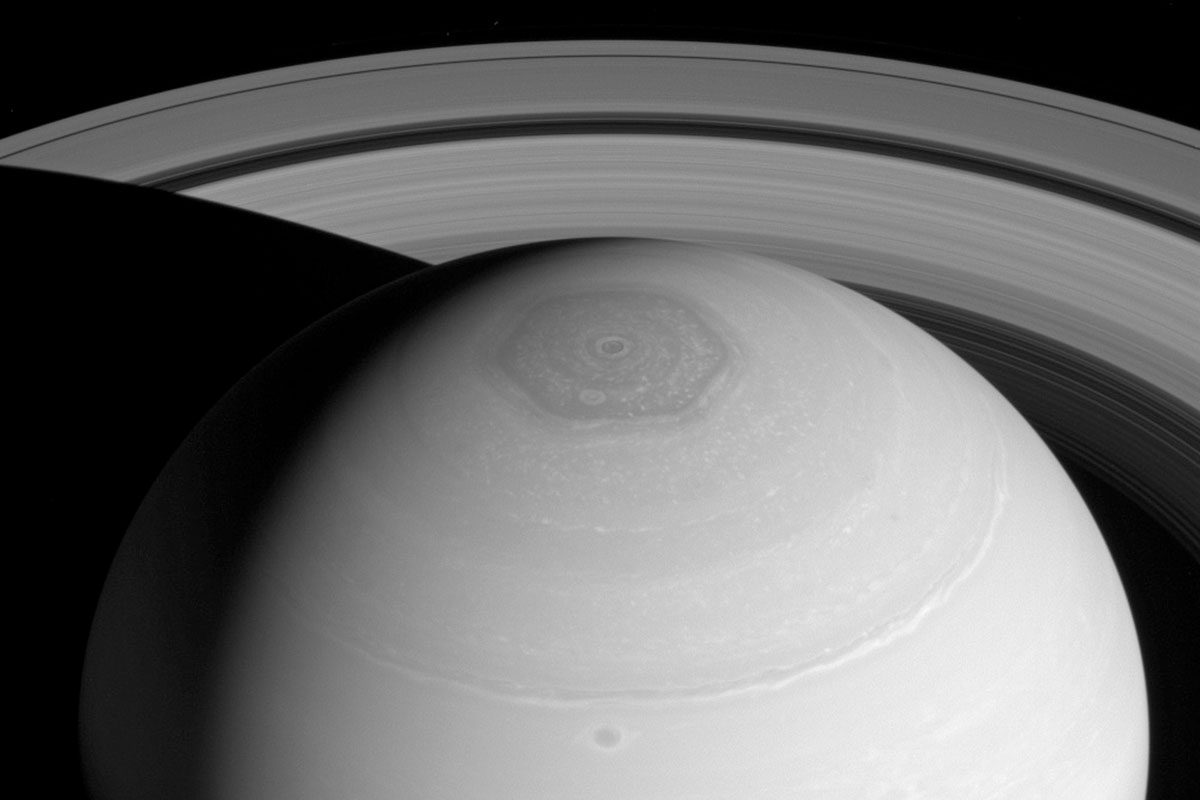Saturn’s hexagon was originally identified thanks to the images taken by the Voyager probes. It is a huge cloud formation in the north of the planet, about 13,800 km in diameter. Unlike the other clouds of the planet’s atmosphere, the hexagon does not show longitude variation. The history of the hexagon – which only exists in the north pole – the scientists had not yet reached a definitive explanation for the question.
Interestingly, since there are no solid, fixed natural formations on Saturn, it is difficult to calculate the length of a day (rotation time). Voyager 1 had collected data in the 1980’s, but faced with the measures made by Cassini (2000’s) it was identified a different of over over 6 minutes. Thanks to Cassini data it was possible to identify that the planet rotates once every 10h 39m 24s.
References
https://www.sciencealert.com/saturn-hexagon-jet-stream-towering-high-into-stratosphere-north-pole
https://earthsky.org/space/saturn-hexagon-tower-above-cloudtops
https://solarsystem.nasa.gov/missions/cassini/science/saturn/hexagon-in-motion/

